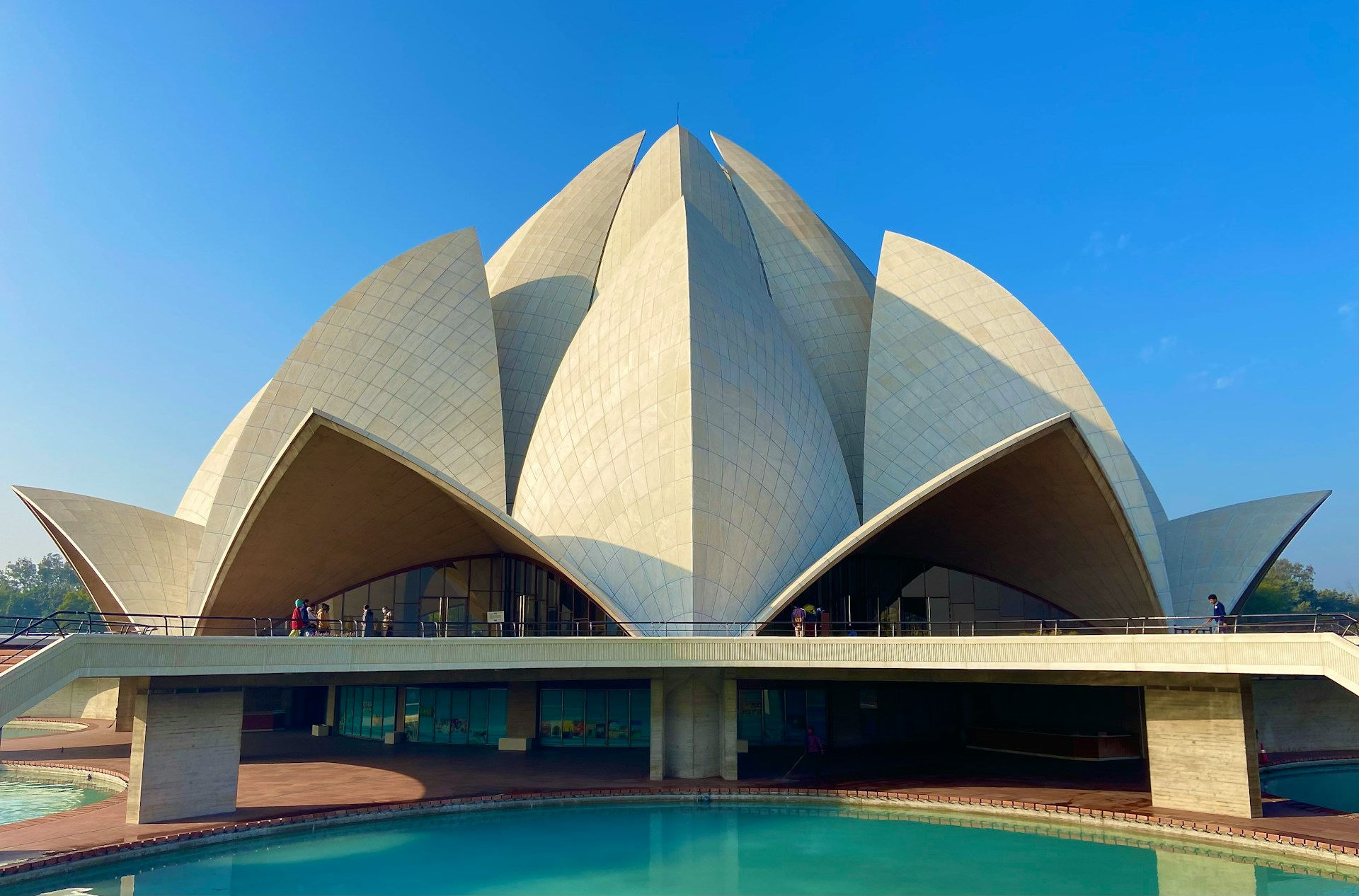
Lotus Temple
PC: Jayanth Muppaneni
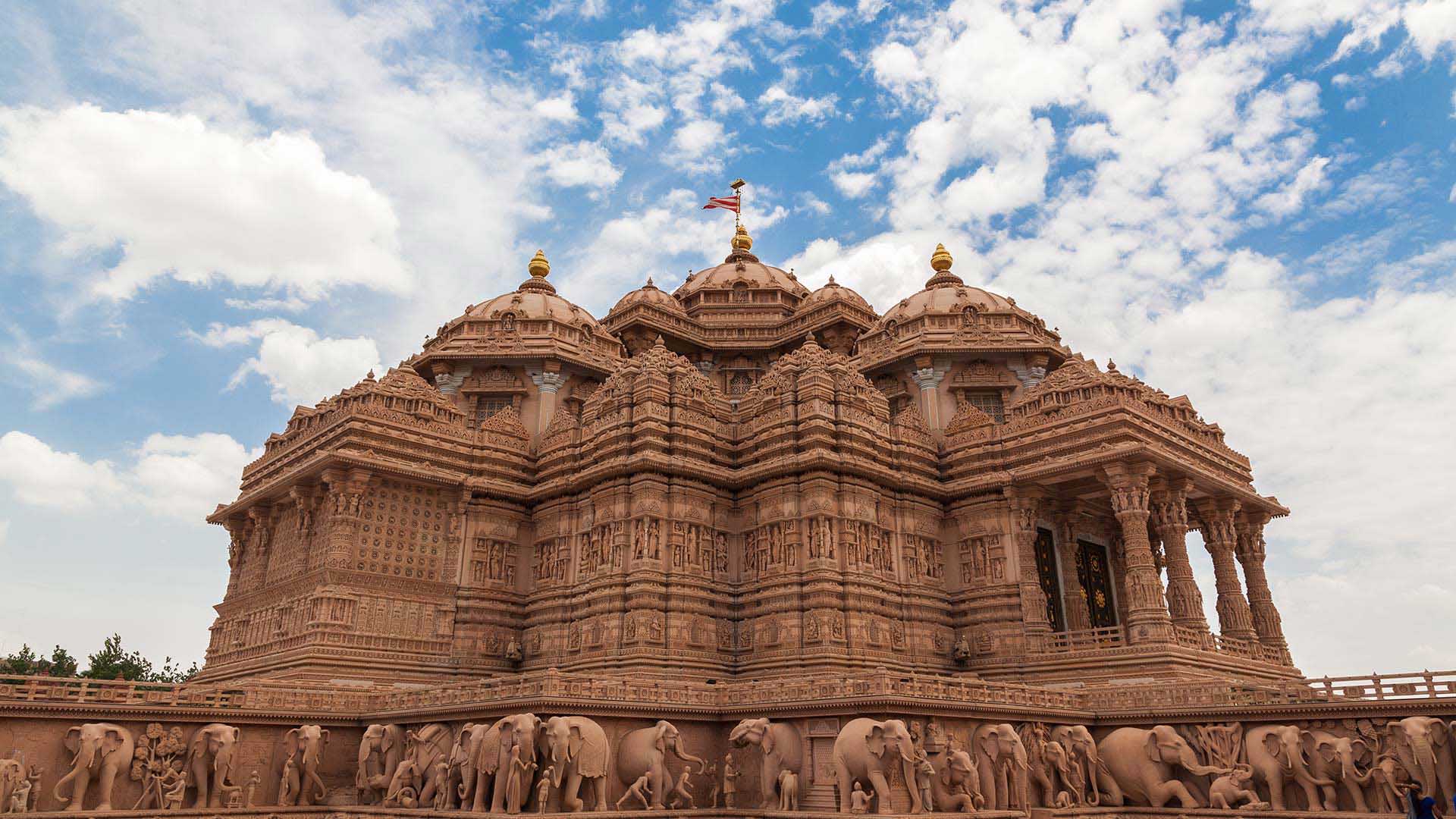
Akshardham Temple
New Delhi
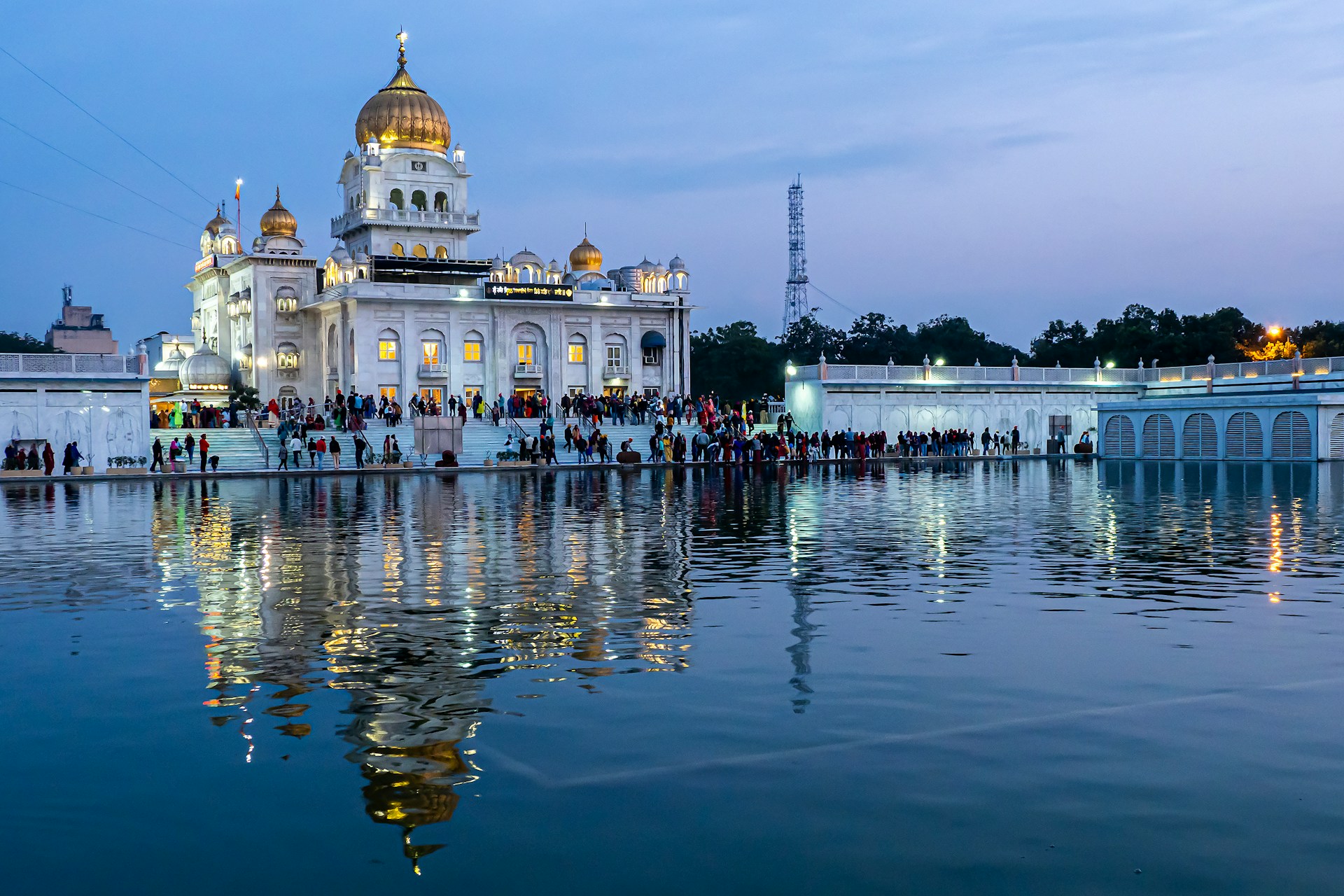
Sri Bangla Sahib Gurudwara
New Delhi
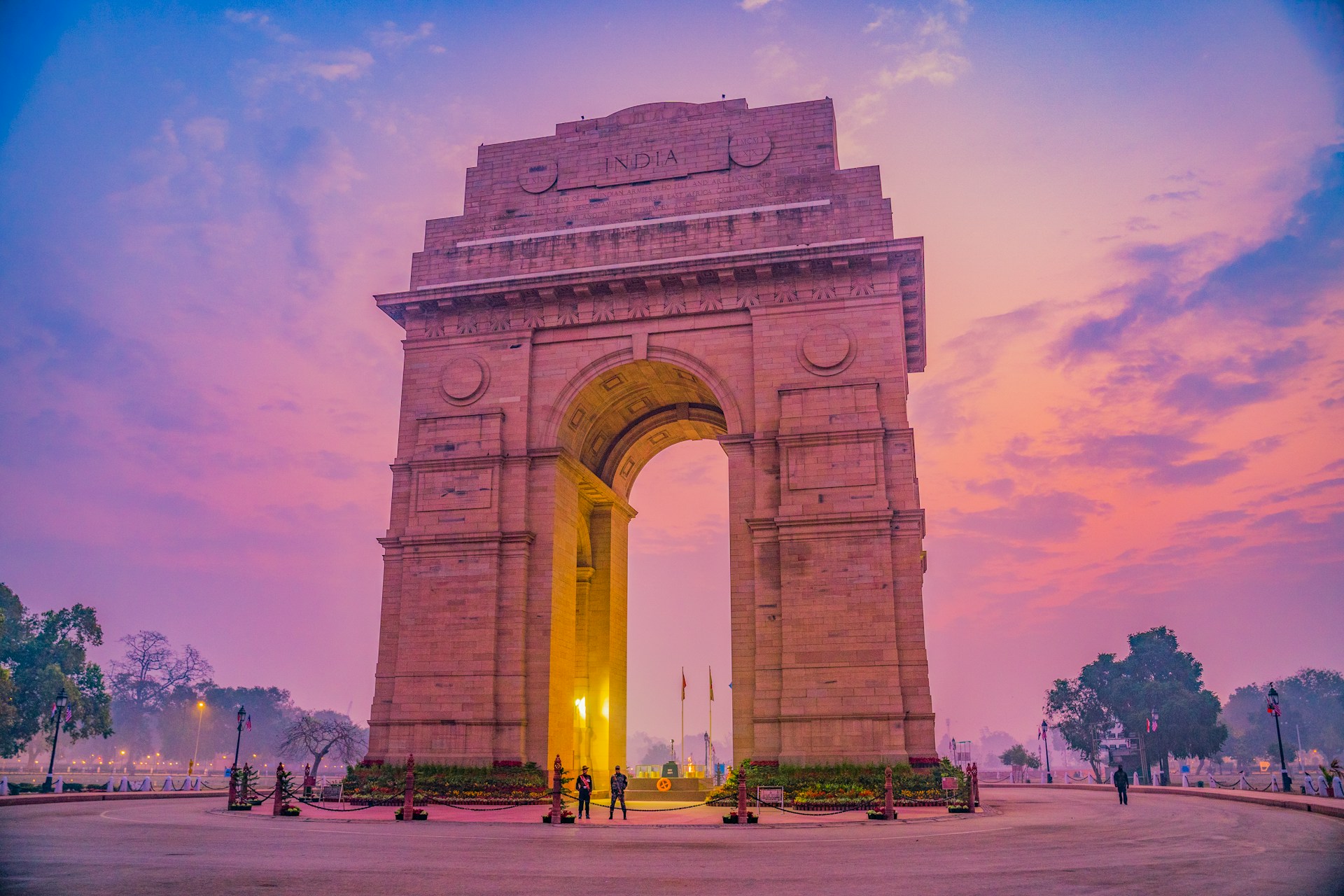
India Gate
PC: Shalender Kumar

Delhi, being the capital city of India and a historical center, is home to numerous significant monuments that reflect its rich heritage. These
historical monuments in Delhi not only serve as architectural marvels but also stand as testament to the city's rich and diverse cultural heritage.
Delhi's rich history, cultural diversity, and architectural splendor, making it a must-visit destination for travelers.

Built in 2005, Akshardham Temple is a relatively new addition to Delhi's religious landscape,
but it has quickly become one of the city's most visited attractions. This temple is dedicated to Swaminarayan sect
of Hindu religion and showcases traditional Hindu architecture and craftsmanship and features exhibitions on Indian
culture and spirituality.
In the evening, visitors can enjoy a mesmerizing musical fountain show that narrates stories from ancient Indian
scriptures through colorful lights, water effects, and music.
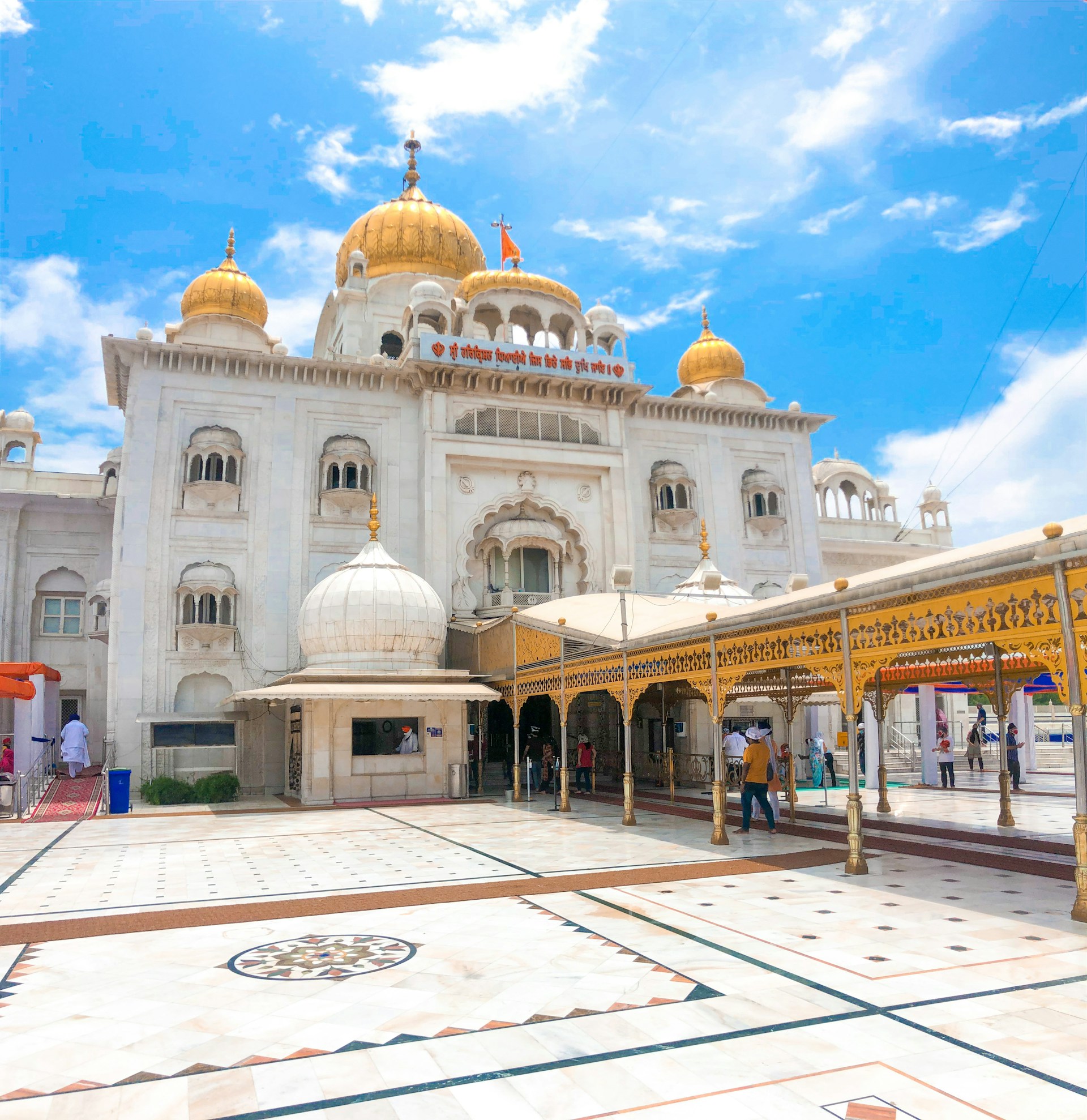
Situated near Connaught Place in Central Delhi, Gurudwara Bangla Sahib is one of the most prominent Sikh gurdwaras
in Delhi. It was originally a bungalow belonging to Raja Jai Singh, an Indian ruler, and was later converted into a
gurdwara after Guru Har Krishan, the eighth Sikh Guru, stayed there during his visit to Delhi.
The gurdwara features a large sarovar (holy tank) and a gold-domed structure. One of the most remarkable features of
Gurudwara Bangla Sahib is its langar, where free meals are served to all visitors regardless of religion, caste, or creed.

Known for its distinctive lotus flower shape, the Lotus Temple is a Bahá'í House of Worship located in South Delhi.
The lotus flower is a symbol of purity and unity in various cultures, and the Lotus Temple embodies these principles.
It has 27 free-standing marble-clad "petals" arranged in clusters to form the lotus shape.
It was completed in 1986 and is open to people of all religious backgrounds. The temple has won numerous architectural
awards for its unique design and is surrounded by beautifully landscaped gardens.
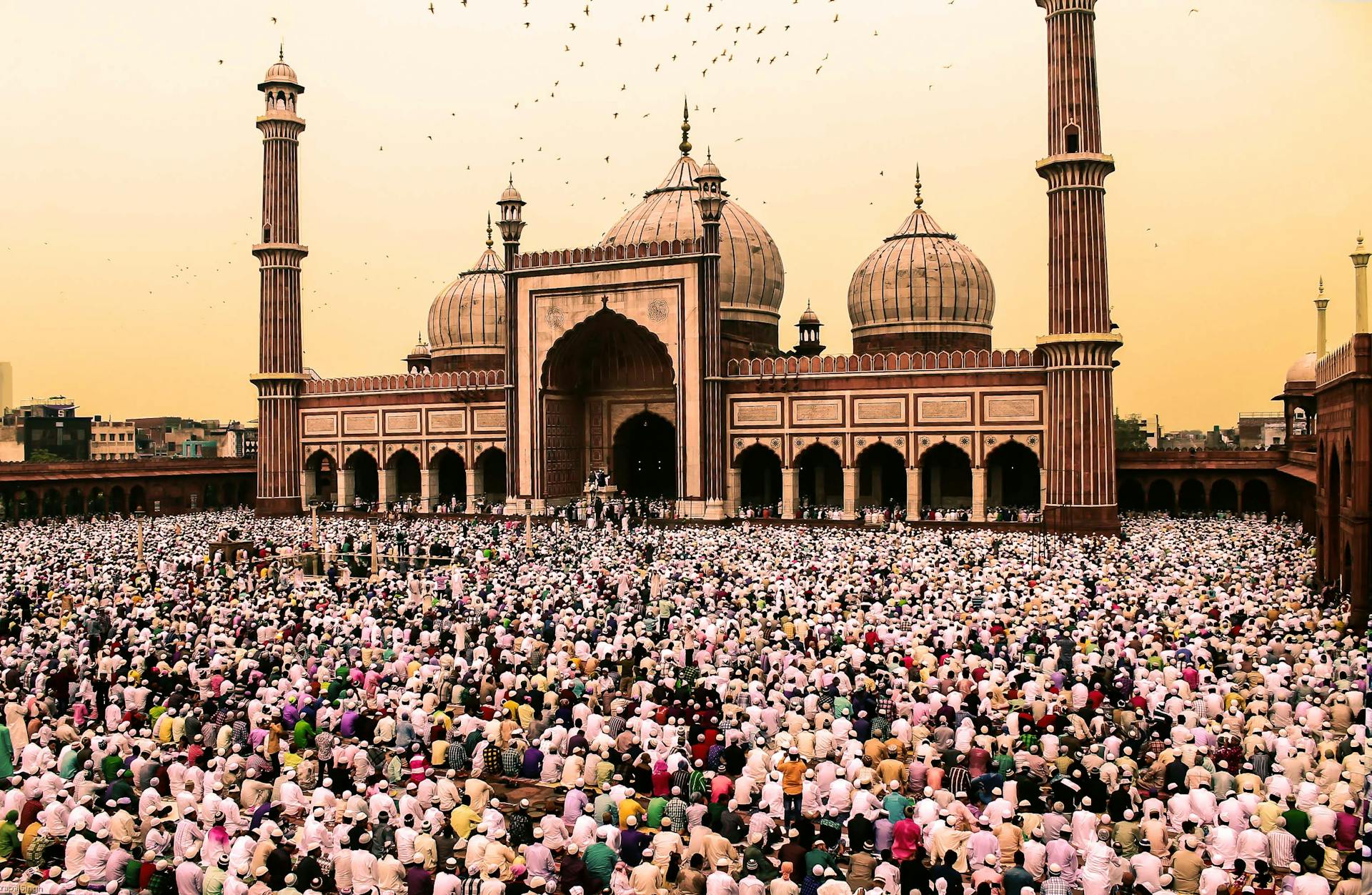
Located in Old Delhi, Jama Masjid is one of the largest mosques in India. It was built by the Mughal Emperor Shah Jahan between 1644 and 1656. The mosque is made of red sandstone and white marble, and it can accommodate up to 25,000 worshippers. Its main prayer hall is topped by three domes and adorned with intricate carvings and calligraphy.
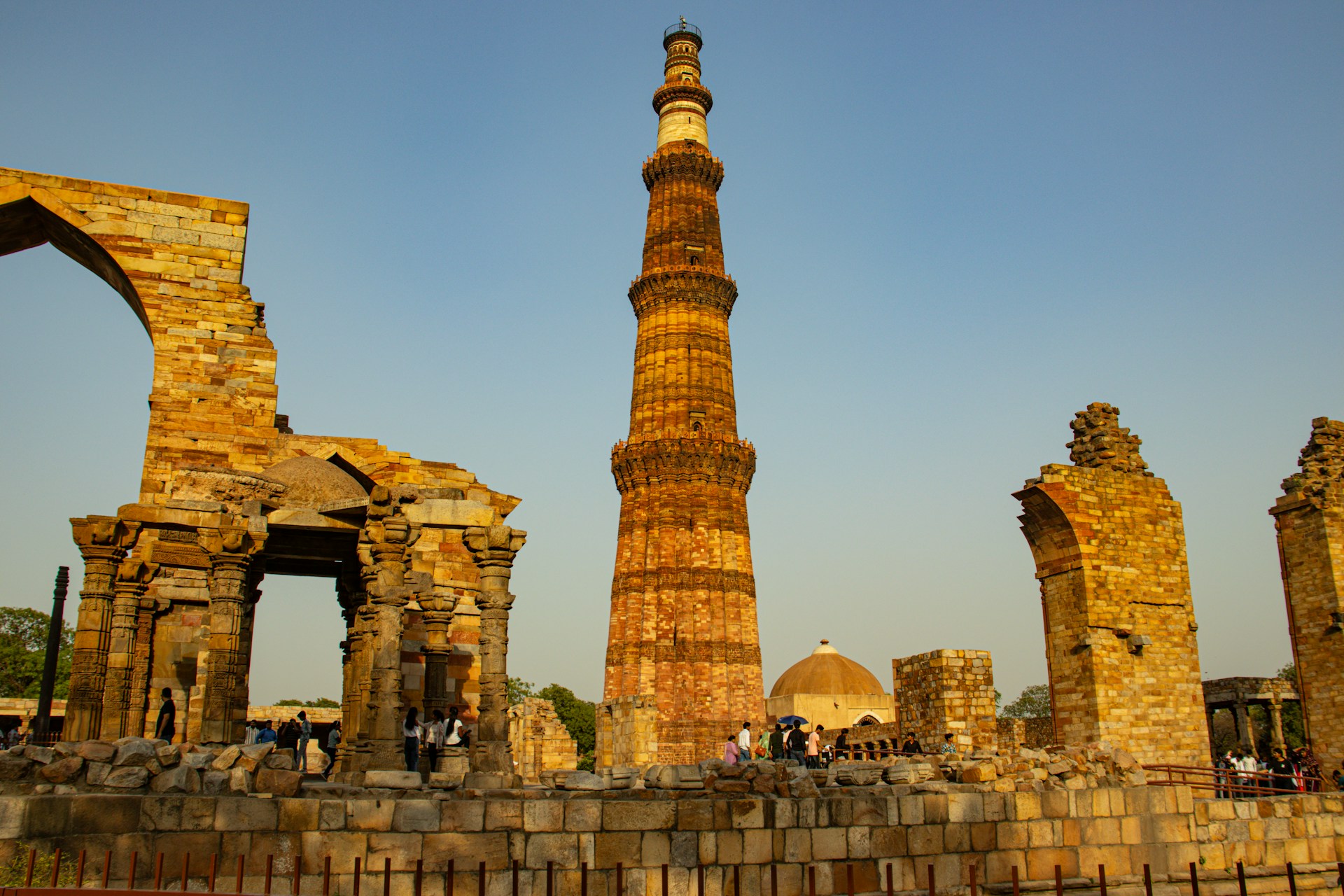
Located at Mehrauli, South Delhi and built in the early 13th century, started by Qutb-ud-din Aibak and completed by
Iltutmish and Firoz Shah Tughlaq.
Qutub Minar is the tallest brick minaret in the world, standing at 73 meters (239.5 feet) tall. It is made of red
sandstone and marble and is adorned with intricate carvings and inscriptions. The minaret is surrounded by several
other medieval structures, including the Quwwat-ul-Islam Mosque and the Iron Pillar of Delhi.
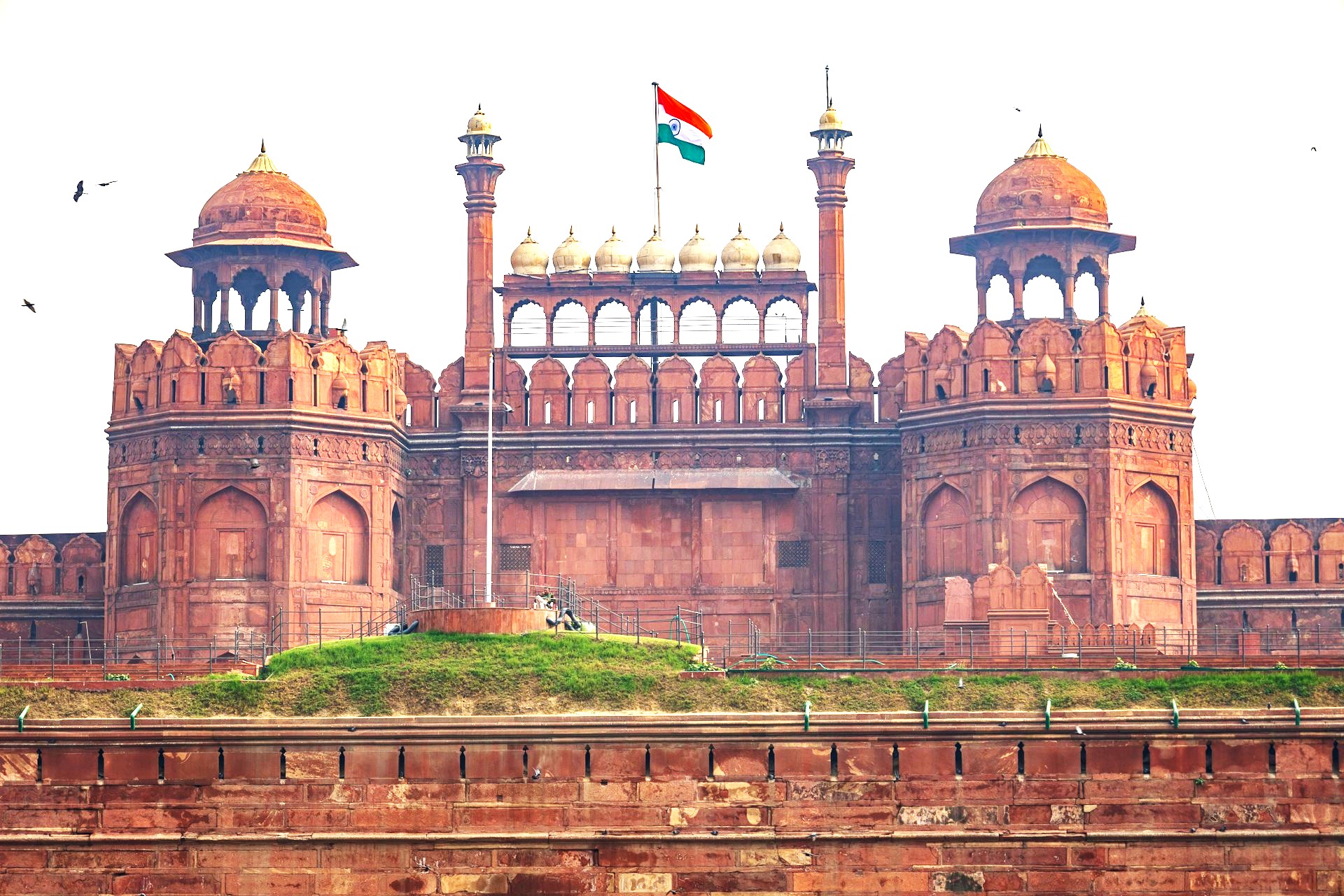
Built by the Mughal Emperor Shah Jahan in the 17th century (construction started in 1638 and completed in 1648), this
fort is located in Old Delhi near Chandani Chowk.
Red Fort is a UNESCO World Heritage Site and one of the most iconic landmarks of Delhi. It served as the main residence
of the Mughal emperors for nearly 200 years. The fort's red sandstone walls, which give it its name, enclose a complex
of palaces, halls, and gardens, including the famous Diwan-i-Aam (Hall of Public Audience) and Diwan-i-Khas
(Hall of Private Audience).
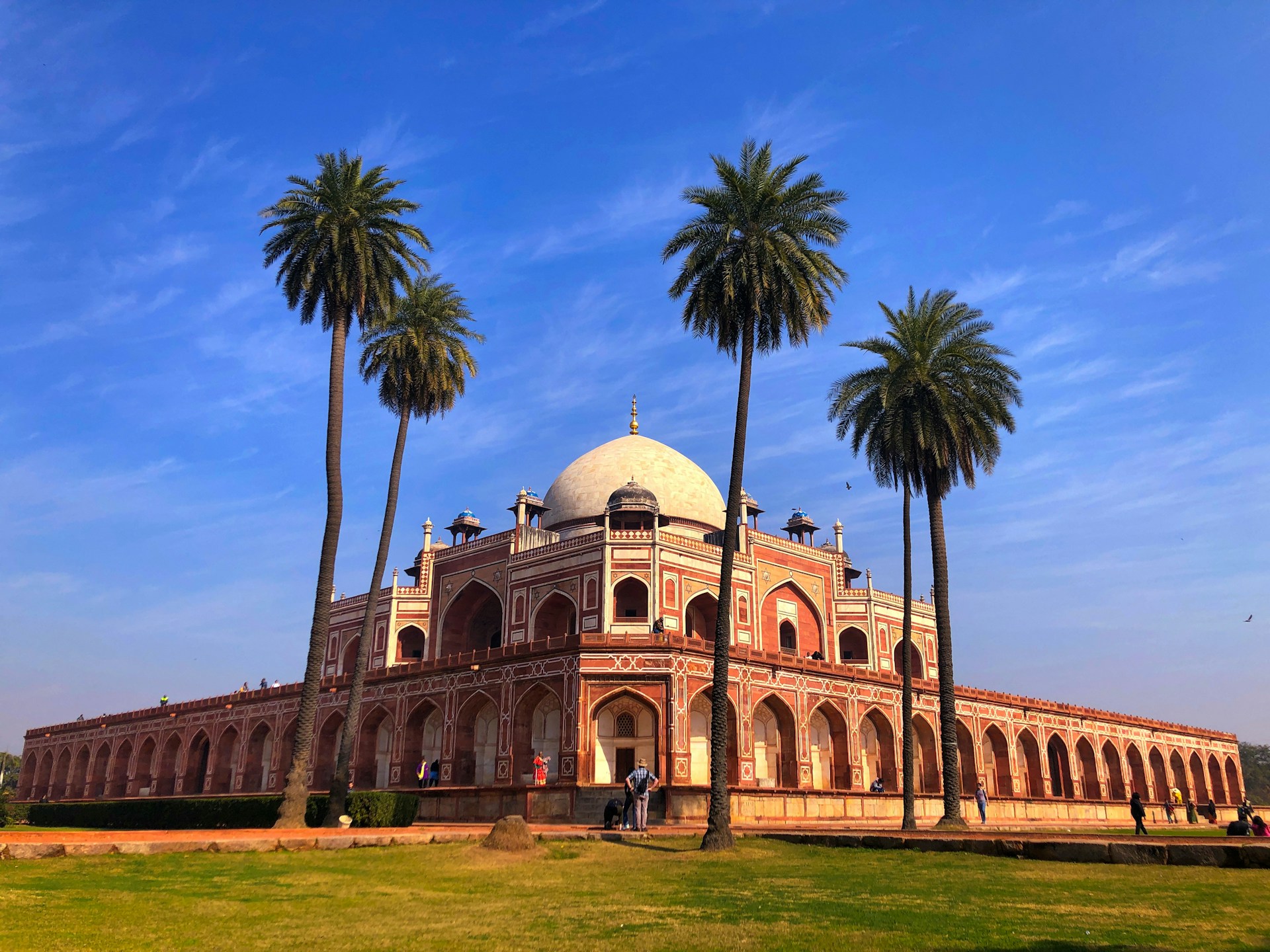
This tonb is located in Nizamuddin East, South Delhi. It was built in the mid-16th century (completed in 1572),
commissioned by Hamida Banu Begum, the widow of Mughal Emperor Humayun.
Humayun's Tomb is a UNESCO World Heritage Site and is considered the precursor to the Taj Mahal. It is known for its
symmetrical Mughal architecture, with a central dome and four minarets. The tomb is set within a large Charbagh (four-part)
garden and features intricate marble lattice work and red sandstone facades.

India Gate was built in the early 20th century, completed in 1931. It is located at Rajpath, Central Delhi.
India Gate is a war memorial dedicated to the Indian soldiers who died during World War I and the Third Anglo-Afghan War.
Designed by Sir Edwin Lutyens, it is inspired by the Arc de Triomphe in Paris. The names of more than 13,000 soldiers are
inscribed on the walls of the monument. It is surrounded by lush lawns and is a popular spot for picnics and evening strolls.